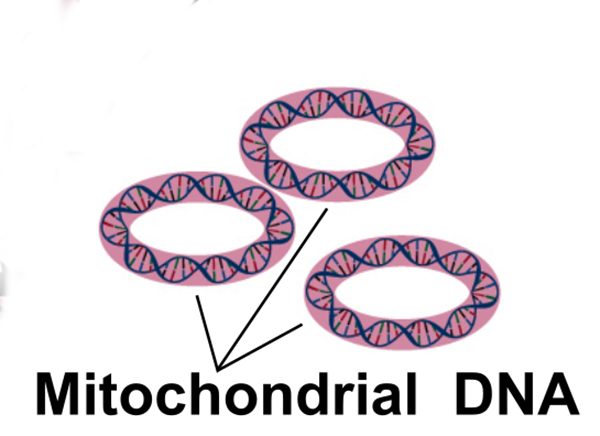
The DNA communication that streams through the cell isn’t always a top-down affair, a matter of the nucleus issuing directives, in the form of DNA-coded templates, to other cellular components. Sometimes, the relatively lowly mitochondria issue directives—and the nucleus complies. According to a new study from the University of Southern California (USC), mitochondria use a bit of their DNA to encode a protein that can enter the nucleus and regulate the expression of nuclear DNA.
This mitochondria-to-DNA messaging activates an antioxidant response, helping the cell cope with metabolic stress. In addition, this kind of messaging is of interest for a more general reason. It shows that the mitochondrial and nuclear genomes co-evolved to independently cross-regulate each other. Mitonuclear communication, the USC scientists speculate, may be genetically integrated.
Understanding how DNA communication is hardwired into the cell will lead more researchers to appreciate the coordination of genes encoded in both genomes, said Changhan David Lee, Ph.D., an assistant professor of gerontology at USC. Moreover, appreciating the contributions of both genomes will help illuminate their role in aging and disease.
Working with human cells, Lee and colleagues showed that metabolic stress triggers 5′-adenosine monophosphate-activated protein kinase (AMPK)–dependent translocation of a protein called MOTS-c. This protein, which is encoded in the mitochondrial genome, localizes to the nucleus, binds to chromatin, regulates nuclear gene expression, and promotes resistance to metabolic stress.
Details of this work appeared July 5 in the journal Cell Metabolism, in an article entitled “The Mitochondrial-Encoded Peptide MOTS-c Translocates to the Nucleus to Regulate Nuclear Gene Expression in Response to Metabolic Stress.”
“In the nucleus,” the article’s authors indicated, “MOTS-c regulated a broad range of genes in response to glucose restriction, including those with antioxidant response elements (ARE), and interacted with ARE-regulating stress-responsive transcription factors, such as nuclear factor erythroid 2-related factor 2 (NFE2L2/NRF2).”
Knowing intimately how cells operate could lead to greater understanding of age-related disease and, perhaps one day, new mitochondria-based treatments. Prescription drugs today are designed based on the blueprint encoded in the nuclear genome. “We haven't been looking at the full complexity of the cellular network,” Lee noted. He added that if we were to fight cancer, for example, with only one of our genomes, then we may have just a partial solution. We could, however, fight cancer and other diseases “with all our genetic components.”
“Most diseases are due to aging, and aging leads to a breakdown in cell functions,” Lee continued. “When things go wrong in the body, it's because some mechanism in the body went wrong. So, understanding how cells age means we have more insight into how the damage occurs and how we can prevent or fix it.
“Mitochondria have their own DNA that presumably comes from ancient bacteria that joined our cells a long time ago. We didn't know that our mitochondrial DNA encoded messages to control the nucleus. In fact, the nucleus has been long thought to hold all our genetic blueprint for building and operating a cell. This is a fundamental discovery that integrates our two genomes as a co-evolved genetic system and may have a lasting impact for a broad range of scientific and medical fields.”



